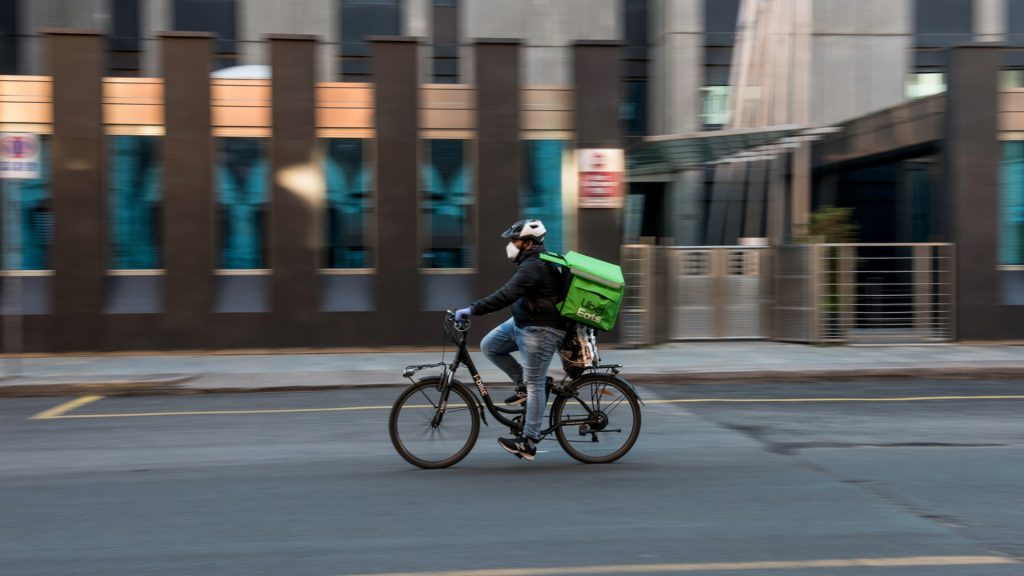The debate around minimum wage has been rampant in recent years, and it appears the Seattle City Council took an initiative to pay gig workers a fair wage in the amount of $20. This includes the category of delivery drivers. This well-meant action has led to unintended consequences, specifically in the food delivery sector.
The PayUp Bill and Its Impact On Gig Workers’ Wages
The PayUp Bill was enacted in 2022 and was designed to offer gig workers a living wage. This is evident in the new law, where delivery drivers received $26 per hour, excluding mileage and tips.

However, this bill raises the per-mile minimum to $0.35 and the effective minimum wage to $19.97, the default minimum wage in Seattle. This appears to be a catch-22 situation, but it has raised eyebrows.
The New Wage Caused A Customer Backlash And Reduced Demand
Customers of food delivery in Seattle have dropped food delivery orders since the implementation of the new $20 minimum wage. Customer complaints, who pay extra fees on deliveries from apps, are discontinuing orders from the state.

The backlash has been, well, brutal, and it has touched the restaurants as well as the delivery companies.
Gig Workers Are Struggling To Balance Their Income And Expenses
Gig workers are guaranteed hourly rates for working. However, they have other expenses, such as fuel for their vehicles and the maintenance required for vehicles. Gig workers have stated that on a net basis, the new wage policy is bleeding drivers’ income.

The executive director of Working Washington, Danielle Alvarado, stated that returning the industry below the minimum is a possibility.
DoorDash Sees 300,000 Fewer Order During The Past 3 Months
DoorDash, one of the food delivery giants, has stated that it has witnessed 300,000 fewer orders in Seattle during the last three months. The amount of the minimum wage rules in the city is directly proportional to the drop in consumer demand.

DoorDash’s statement speaks volumes: “It’s painfully clear from listening to Dashers, merchants, and consumers that this new law simply isn’t working.”
Uber Eats and the Domino Effect Of The Price Hikes
Uber Eats, too, fell to the same trap. The extra fee for customers resulted in a noticeable dip in orders. The elusive equilibrium between fair wages and consumer affordability waits. Uber Eats suffered when the consumers were aware of the increase in prices.

What is conveniently available with a simple tap of a button is suddenly getting more expensive.
The Unintended Consequences Of Affecting Worker’s Livelihoods
The $20 minimum wage was a good-intentioned attempt to uplift gig workers. However, it has hurt the very people it was trying to save. The scaffolding of the food delivery sector is as fragile as a butterfly’s wing–a fine balance of costs, prices, and consumer spends.

When prices go up because labor rates are up, the consumers have some elasticity with their spending. The result? A drop in orders and revenue for restaurants and delivery applications.
Consumer Behavior Causes A Drop In Orders
Consumer behavior is what makes or breaks a business model. As the prices go up, the consumers reconsider and rejig their spend. The net result?

A drop in orders and reduced revenue for restaurants and delivery applications. Striking the perfect balance between fair wages and consumer affordability is a conundrum.
Sustainable Solutions Need To Be Implemented To Protect Workers And Businesses
Seattle’s experience highlights the requirement for sustainable solutions in consideration of both the workers’ livelihoods and consumer affordability.

The policymakers need to devise ways that will provide fair wages to workers without putting the livelihoods of small businesses under threat. Balancing fair wages with competitive prices remains a conundrum that demands cautious policy-making.
Small Businesses Will Face An Additional Struggle For Survival
Small restaurants, already struggling to survive, face an additional burden. The increased costs associated with the $20 minimum wage put pressure on their profit margins.

Some have even had to reduce staff or close their doors. These businesses are caught in a delicate balancing act, trying to maintain quality service while navigating financial constraints.
Policymakers Will Determine The Future of Food Delivery
As Seattle learns the hard lesson of its wage policy, so do policymakers across the country. Cities must learn from this experiment and formulate policies that allow for the coexistence of the gig worker and viability of local businesses.

That delicate balance between fair labor and affordability for the consumer is essential—one that will necessarily require ongoing dialogue, flexibility, and empathy.
The Real Human Impact Behind The Statistics
Behind the numbers lie real humans—the drivers who wind through traffic, weather, and customer expectations.

Their jobs are at risk, and finding that middle ground that benefits everyone is not an easy task. We cannot forget that policy decisions affect real people and their families.
Technology Can Ensure Efficiency And Liveable Wages
Technology can be a force for good in addressing the challenges listed above. Superior algorithms for determining routes, electric vehicles, and better logistics can help drop costs and expand the delivery service.

By using the technology, we can make it possible for workers to earn a livable wage while consumers receive efficient and affordable service.
Gig Workers And Business Will Need To Collaborate To Find Solutions
Restaurants, delivery platform companies, and policymakers must talk to each other. The cooperative nature of these different groups can develop creative solutions that work for the gig worker and the business.

The experiences of gig workers must be heard, and their needs met in order to inform policies thoughtfully.
Lessons Learned From The Minimum Wage Experiment
Seattle’s experiment with the $ 20-a-hour minimum wage is a cautionary tale. It reminds us that policy, well-intentioned as it may be, can have unforeseen consequences.

As we move forward, let’s find solutions that put power in the hands of workers while keeping the business environment healthy. The successes and failures in this will make for better policies going forward.






